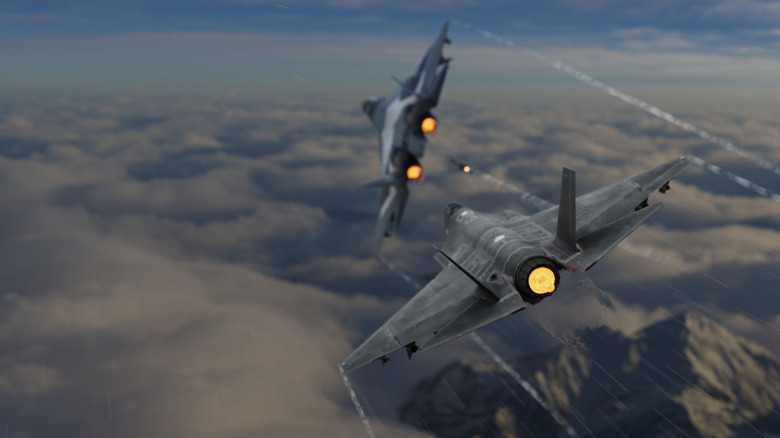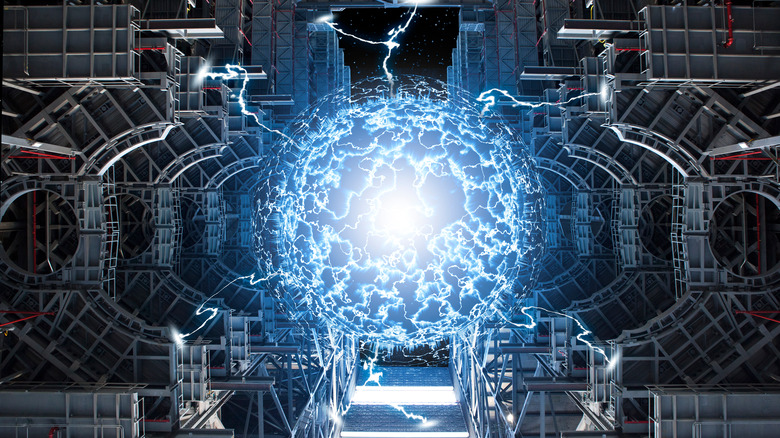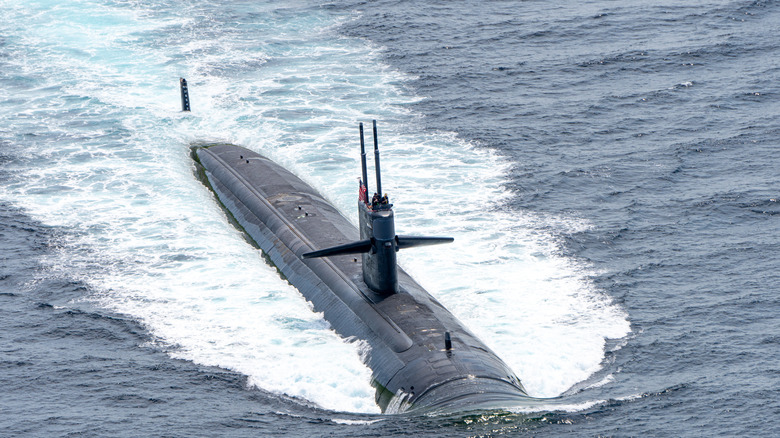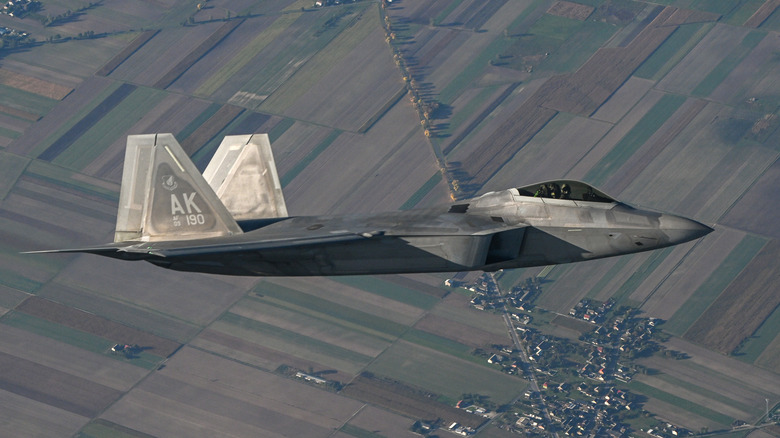Why Nuclear Fusion Could Be The Key To Air Superiority
The control of the skies is central to modern warfare. As the world has recently seen in Ukraine, the first thing a nation does when invading somewhere else is attempt to establish air superiority, and ideally establish air supremacy. Russia's invasion of Ukraine has also shown the world how difficult a war is to win if control of the skies is never established. The U.S. Air Force describes air superiority as "when friendly operations are able to proceed without prohibitive interference from opposing forces" and also claims that "in modern military operations, achieving this level of control of the air is a critical pre-condition for success."
That condition is achieved in a number of ways. One method involves striking at an enemy's air bases and airports so they struggle to get a plane off the ground. The use of radar and the strategic placement of surface-to-air missile systems can also make certain areas dangerous for enemy aircraft to operate in. But what you really need to control the skies are fighter jets. Planes tend to have specialist roles and fighter jets, like the F-15, are designed to combat and take down other aircraft.
The development of new and more advanced fighters is a constant process, with the world's foremost air forces currently having access to fifth-generation fighters, and a sixth generation is expected to take to the skies in the 2030s (via Popular Mechanics). Older jets are also in service, with newer fighters usually making up a small portion of a country's air force. But if a Lockheed Martin patent makes it from the drawing board to the runway, we could see a jet that will change how air combat works forever.
What is nuclear fusion?
All currently active nuclear reactors use a process called nuclear fission. Fission uses the energy released by highly radioactive elements like uranium and results in the production of nuclear waste, which we struggle to dispose of. Another kind of nuclear reaction produces energy, and if scientists manage to make it practical, it could arguably be the most significant technological advancement in human history. Nuclear fusion happens naturally: it's essentially how the sun and other stars work. During the fusion process, hydrogen, the most plentiful element in the universe, is converted into helium.
The process also produces a lot of excess energy. As the U.S. Department of Energy explains, the helium atom created in the fusion process has less mass than the two hydrogen atoms used to create it. The excess mass turns into the energy the reaction gives off. While there have been advancements and promising new fusion experiments surfacing regularly, it does seem to be one of those scientific advancements that are always "just five or 10 years off." However, if we do make fusion practical, then humanity will essentially have cheap, clean, limitless energy.
No more reliance on fossil fuels, no messing around with solar panels and windmills, and no more choking off river flows with dams. Fusion is also incredibly safe. As the International Atomic Energy Agency explains, the reaction is self-limiting. If something goes wrong and it can't be controlled, the fusion reaction will essentially shut itself off. Similarly, the materials the reaction uses can't be used to make nuclear weapons like uranium can. So countries building fusion plants won't create the kind of diplomatic issues that certain nations building fission plants currently does.
The military has other nuclear-powered vehicles
Nuclear-powered vehicles aren't anything new, though the ones that currently exist rely on nuclear fission. The U.S. Navy has had a number of nuclear-powered vessels for decades, as have other major navies around the world. Nuclear subs have both benefits and downsides. Unlike diesel-powered subs, they can remain out at sea for as long as the crew's food supplies will last. They're capable of producing the air that crews need to breathe, so nuclear subs don't need to surface. However, there are downsides to nuclear subs and the far higher cost of the vessels is just one negative.
Reactors aren't as quiet as you may think, and unlike diesel engines, they can't be switched off. One of a submarine's main selling points is stealth, and looking for sounds that shouldn't be there is one of the ways you can spot them. This led to a situation a few years ago where diesel-powered Swedish subs outperformed the American vessels during a joint training exercise (via Insider).
Aircraft carriers, which have been central to American naval operations since World War Two, can also be nuclear-powered, but the advantages of this are less clear. As the Naval Post explains, the unlimited range a nuclear reactor can theoretically provide is pretty much useless. Carriers are too vulnerable and valuable to send out alone and will need to make fuel stops with their oil-powered escorts anyway. Savings on fuel are offset by the higher upfront costs, and nuclear-powered vessels can't be sold to other nations at the end of their service lives. They can theoretically store more aviation fuel than their conventional counterparts and are also capable of using a steam-powered catapult launch system instead of a ramp.
How a fusion-powered jet could dominate the skies
While nuclear submarines and carriers have their drawbacks, a fusion-powered jet may be a big positive for the air force. Lockheed Martin filed a patent for a fusion-powered jet several years ago. The jet would contain a tiny fusion reactor, which is what would power the jet's engines. Normal jets burn fuel, but a nuclear jet would switch its engine's combustion chambers for heat exchangers, which Lockheed says would produce the same amount of thrust.
A fusion-powered aircraft would also have a number of advantages over a conventionally fuelled one. The main one is, it would never have to refuel. The reactor would contain all the energy the jet would need over its lifetime. This leads to a very useful secondary effect, which is the jet having essentially unlimited range. The U.S. Air Force says an F-16 has a range of around 1,000 miles. That means a jet can travel around 500 miles, hit its target, then make it back to base. A fusion-powered jet will last until the pilot passes out from exhaustion. This may make inter-continental air combat missions routine. It also saves the military a logistics headache, as it would no longer have to transport and store the thousands of gallons of fuel a fleet of jets requires to operate.
The potential amount of energy a fusion reactor can generate also makes energy weapons a possibility. Instead of relying on conventional weapons, the nuclear-powered fighter jets of the future could use high-powered lasers to win dogfights. And if a fusion-powered jet does get shot down, it won't turn into a dirty bomb. Fusion reactions don't use radioactive elements like uranium, so the only things emitted from the reactor are hydrogen and helium.



